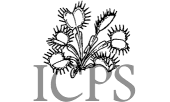|
Carnivorous Plant Newsletter
Volume 42, Number 1, March 2013, pages 24 - 29
New Cultivars
Sarracenia ‘Purple Velvet’
Dionaea muscipula ‘Gremlin’
Dionaea muscipula ‘Ginormous’
Nepenthes ‘The Succubus’
Sarracenia ‘Purple Velvet’
Submitted: 10 December 2012
I developed a new hybrid, Sarracenia ‘Purple Velvet’, by transferring the pollen from a tall
dark red S. alata × willisii to the ovary of a S. purpurea subsp. venosa. The pollination occurred
in October 2006. Six seeds were collected and sown in May 2007 and sprouted in October 2007. While two of the seedlings raised from the same ovary have similar shaped pitchers, one of the
plants is veined, green in color and larger in size (Fig. 1 left), whereas the second plant, Sarracenia ‘Purple Velvet’ (Fig. 1 right), is smaller and has characteristics unique to any other Sarracenia
purpurea hybrid I have come across. Sarracenia ‘Purple Velvet’ produces decumbent pitchers that
are similar in shape to S. purpurea subsp. venosa, although these are slightly thinner, pitchers are
dark purple, and the lid curves inwards. New pitchers are dark red in color, before intensifying
into a dark purple color as the pitcher matures. Downward pointing hairs are present on the inner
surface of the lid, as with the S. purpurea parent. The pitchers are currently 19 cm in height (including
the lid) and 3 cm in width (6 cm across the lid). Characteristics inherited from the pollen
parent include slightly thinner pitchers and their dark color. I coined the name Sarracenia ‘Purple
Velvet’ on 27 January 2012 due to its intense purple color. This plant has so far not flowered,
although both parent plants have the same red colored petals.
—Steve Amoroso • Australia • steve.1600@yahoo.com
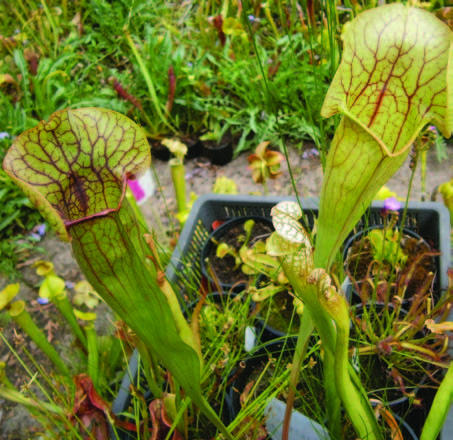 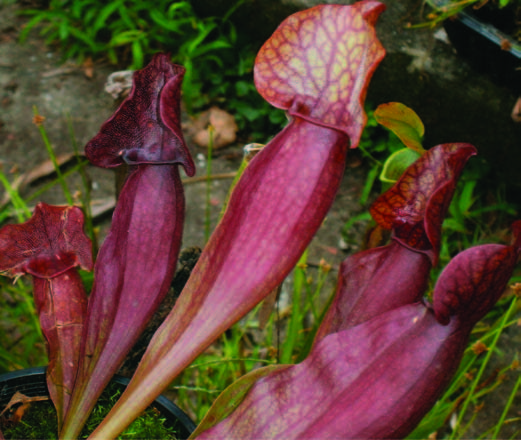
Figure 1: Sibling of Sarracenia ‘Purple Velvet’ (left) and Sarracenia ‘Purple Velvet’ (right).
Dionaea muscipula ‘Gremlin’
Submitted: 23 October 2012
Occasionally when we have been low on Venus’ flytraps, we purchase them from a large wholesaler
that usually puts them in horrible little capsules and sends them to the slaughter at local big box stores. In May 2009, I found a nice all green form in one of the batches. I liked the look of it
and as I didn’t have an all-green flytrap in my personal collection, I brought it home and grew it
outdoors with my other flytraps. By September 8, it had stuffed the pot so that the sides were bulging
out (Fig. 2).
That winter I divided the plant and put it into a 30-cm bowl, which it promptly filled with plants.
The next year, the plants easily filled up two such 30-cm bowls with some extra.
As I looked at the mound of plants that resulted in just a few years from a small clump, I realized
that this plant was something special. Clearly this is an extremely vigorous clone that has a bizarre
obsession with freely dividing and clumping. All you need to do is apply plenty of distilled water, then sit back and watch it multiply like a gremlin. While the plant is entirely golden green, new traps
may blush a very light pink when they first open in strong light. This fades away to green as they
mature, but, because of this, I doubt that it is truly anthocyanin free. It can be distinguished from ‘Justina Davis’ by the pink blush in newly opened traps and its vigorous clumping nature.
This clone will soon be in tissue culture. We have sold a precious few in the nursery this year, but
we are hoping to have many more next summer.
Warning! Do not feed after midnight...
—Damon Collingsworth • California Carnivores • 2833 Old Gravenstein Hwy • Sebastopol, CA
95472 • Califcarn@aol.com
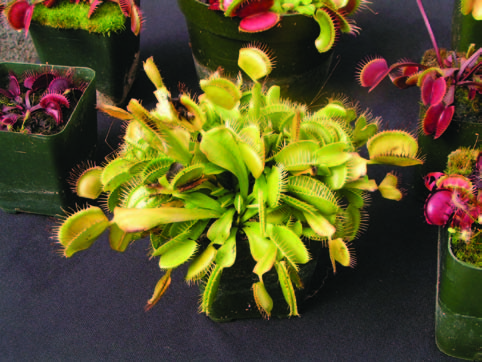 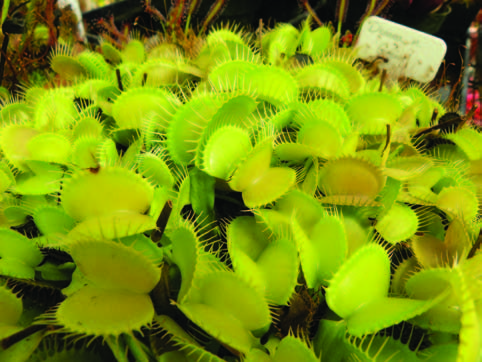
Figure 2: Dionaea ‘Gremlin’ fills a 30-cm bowl.
Dionaea muscipula ‘Ginormous’
Submitted: 23 October 2012
Peter D’Amato first wrote about visiting the introduced carnivorous plant bogs at Albion,
California in 1988 in his article, “A Field Trip to Mendocino” Carniv. Pl. Newslett. 17(1):15-19,21 and he took me there for the first time in 2005. On the long drive to Mendocino County,
Peter told me of the large clump of Venus’ flytraps that he had visited for years.
After we had explored the area for quite a while, Peter pointed and as my gaze followed his
direction I saw the familiar white flytrap flowers sticking up out of the grass. I hurried to see
it closer and was rewarded with a view of a massive flytrap clump. The traps were so huge that
a few of them had even trapped little Pacific tree frogs (Fig. 3). All that remained were tiny,
skeletonized shadows pressed into one side of the trap. Amazing!
This was the first “wild” flytrap that I had ever seen, so I attributed its large size to its age,
habitat, and gruesome diet. Now, years later, after visiting many flytrap sites in North Carolina,
I realize that it would have been the biggest flytrap in any bog.
As time went by, I visited the Albion bog almost every year to check in and take photos.
Then just a few years ago, we found out that the property was owned by The Nature Conservancy
(TNC), and that TNC did not appreciate the planting of non-native plants on their property.
Barry Rice, then employed by TNC, participated in a removal of the flytraps along with
a few other introduced carnivores, and the plants were donated to University of California,
Berkeley. Dionaea muscipula ‘Ginormous’ is a division from that plant that used to grow in
Albion.
Once, I got my hands on a piece of this old friend, I grew it outdoors at home with my other
flytraps and by the end of that summer it had grown remarkably large again! Now, after growing
it for a few years, I have realized that it is possibly the biggest and best flytrap cultivar
so far, producing traps that rival those of the now famous and mighty Dionaea ‘B52’ (Fig. 3, 4, Back Cover). It seems to be slightly more vigorous than ‘B52’ especially when grown outdoors.
It can also be distinguished from that clone because the petioles tend to be longer and
the interiors of the traps are very red, but often not quite as dark red as ‘B52’. I am quite sure
that it is not ‘B-52’, as this flytrap had been there in Albion since at least 1988, long before ‘B-52’ was even a glimmer in Henning von Schmeling’s eye.
I have asked those who originally planted carnivorous plants in the bog (who shall remain
nameless) about the flytrap and no one quite remembers who put what where. It may be that
this is some old unregistered clone long forgotten, but I doubt it. It seems to me that if a cultivar
of this quality had been around years ago, surely it would be well known and distributed
by now.
We recently introduced ‘Ginormous’ into tissue culture and we should have large quantities
for sale exclusively at California Carnivores by summer 2013. Also, in an effort to breed ever
larger traps, we have also crossed ‘Ginormous’ with ‘B52’ and the progeny already have giant
traps for their age. These should be available by next spring too.
Postscript: California Carnivores would never condone feeding poor little frogs to flytraps. Frogs
are our friends!
—Damon Collingsworth • California Carnivores • 2833 Old Gravenstein Hwy • Sebastopol, CA
95472 • Califcarn@aol.com
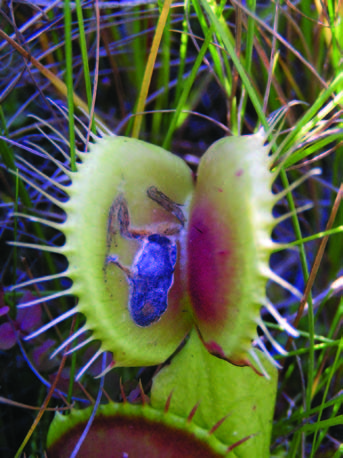 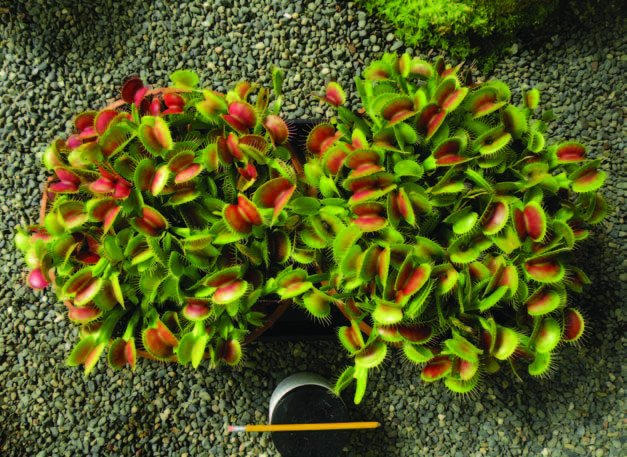
Figure 3: Dionaea ‘Ginormous’ with a tree frog (left) and comparison of Dionaea ‘B52’ (right-left)
and Dionaea ‘Ginormous’ (right-right).
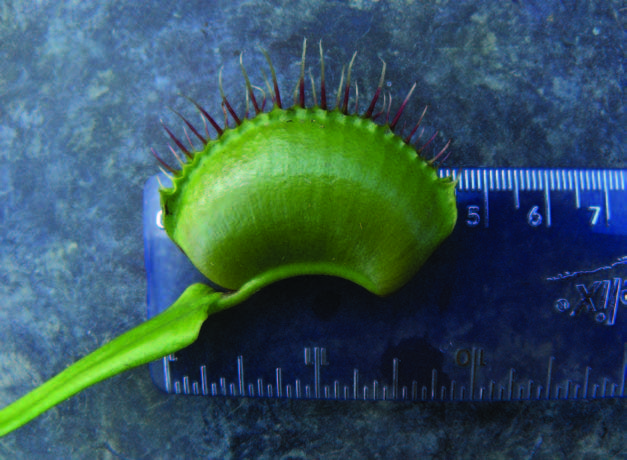 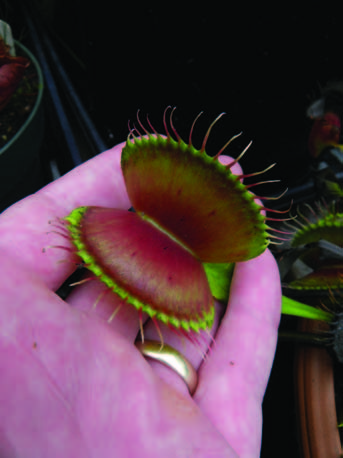
Figure 4: The traps of Dionaea ‘Ginormous’ can be 4.5 cm.
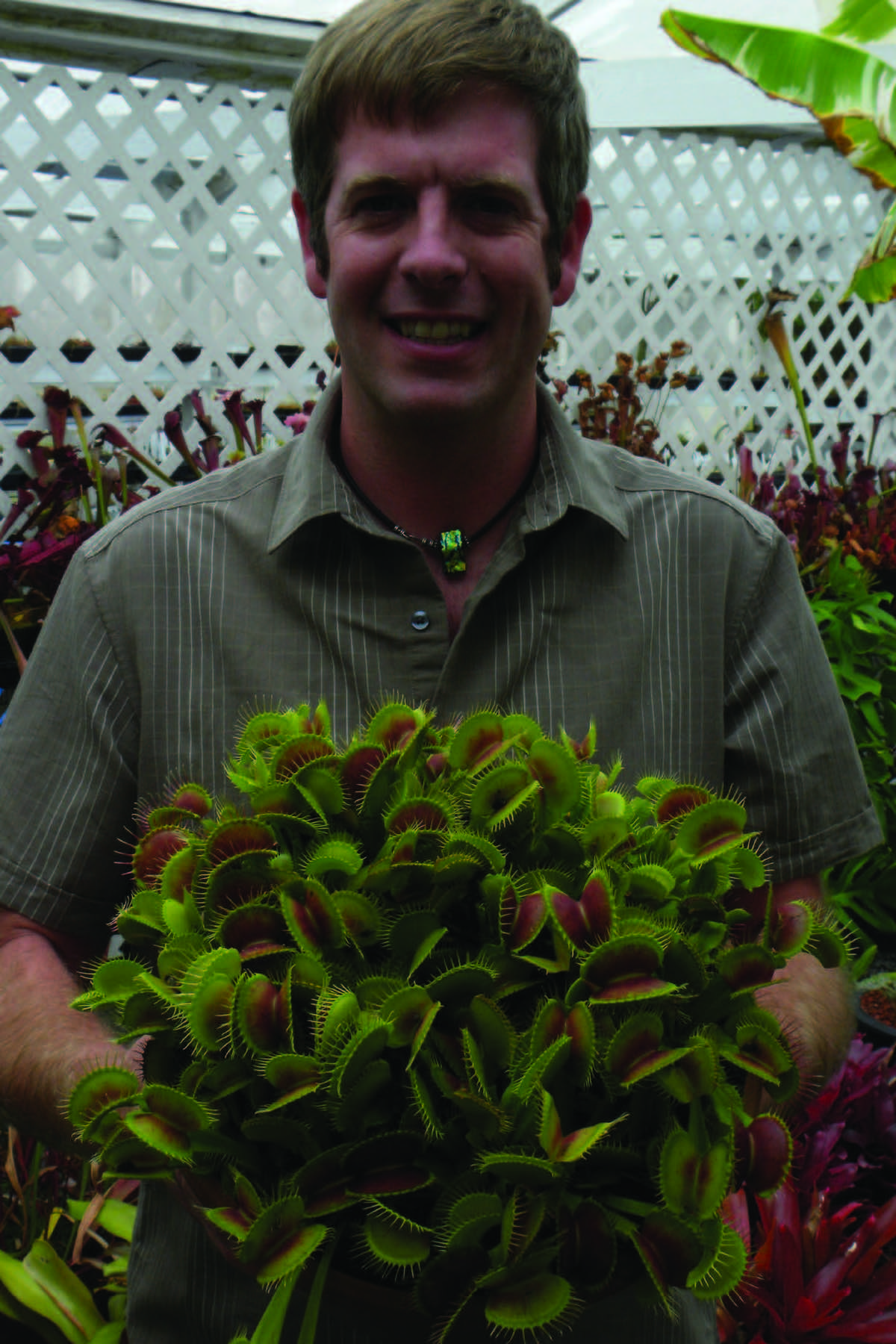
Back Cover: The cultivar Dionaea ‘Ginormous’. Photo by Damon Collingsworth.
Nepenthes ‘The Succubus’
Submitted: 1 October 2012
Nepenthes ‘The Succubus’ is a hybrid N. lowii × ventricosa (red form) that was produced by
Geoff and Andrea Mansell of Exotica Plants, Australia, and purchased as a small cutting in 2007
from Tony Paroubek at Exotic Plants Plus, USA.
The characteristics that distinguish N. ‘The Succubus’ from a somewhat similar cultivar N. ‘Peter D’Amato’ are that N. ‘The Succubus’ has exaggerated features of the pitcher mouth with
a flaring peristome (Fig. 5), and larger peristome teeth with the pitcher lid consistently exhibiting
numerous hairy spikes (Fig. 6) The pitcher body is squat, robust, and bulbous. The pitcher
coloration is deep red, even the tendril and pitcher base are richly colored a uniform red. The
upper pitchers are still quite deeply colored and have great peristome striping, with deep reds
and flushed yellows.
The pitchers of N. ‘Peter D’Amato’ tend to be longer and more slender and do not have
the consistent, full lid of hairy spikes nor as large peristome teeth. The parents of N. ‘Peter
D’Amato’, according to The Savage Garden (D’Amato 1998 p.274), are N. ventricosa × lowii.
The female N. lowii × male N. ventricosa cross (note that the female and male parents are
reversed) that produced N. ‘The Succubus’ gives this cultivar stronger N. lowii characteristics
such as the lid spikes, peristome teeth, and more contorted features, but making it less tolerant
of warm temperatures and not as fast growing. The deep coloration, numerous lid spikes and
striped peristome, even on the upper pitchers, are all distinguishing characteristics that set this
individual apart from other N. lowii × ventricosa hybrids.
Also, the plant grows large like N. lowii, compact like N. ventricosa, and produces pitchers
frequently, making it a great indoor specimen (Fig. 7). It grows well in warm temperatures, but
exhibits the best characteristics in cooler temperatures akin to the N. lowii parent.
The plant has flowered and is a female
This plant was awarded Juried Best-in-Show at the 2012 ICPS Conference and Best-in-Show
at the 2010 NECPS Exhibition.
I named this plant N. ‘The Succubus’ in July 2012 because it is so deeply colored blood red,
has such wicked characteristics, and with the constricted waist giving it a feminine, vampish
appearance. The plant has an entrancing and demonic quality, and as it is a female, the name is
particularly fitting.
—Matthew M. Kaelin • Bellmore • NY • USA • mattfromquogue@aol.com
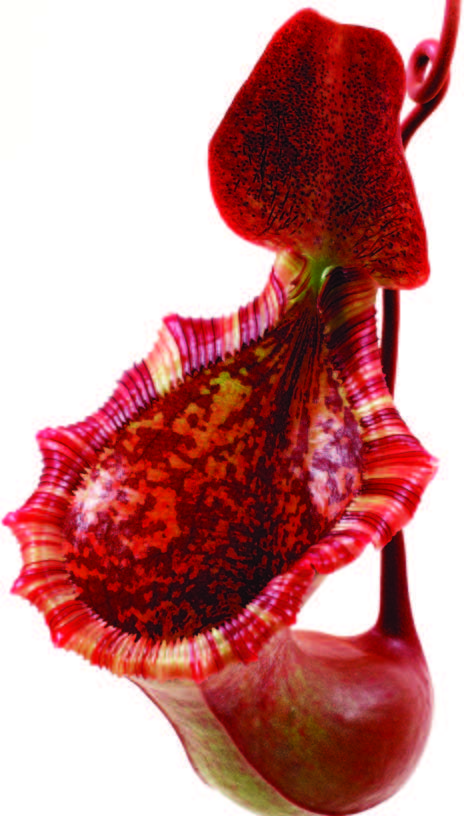 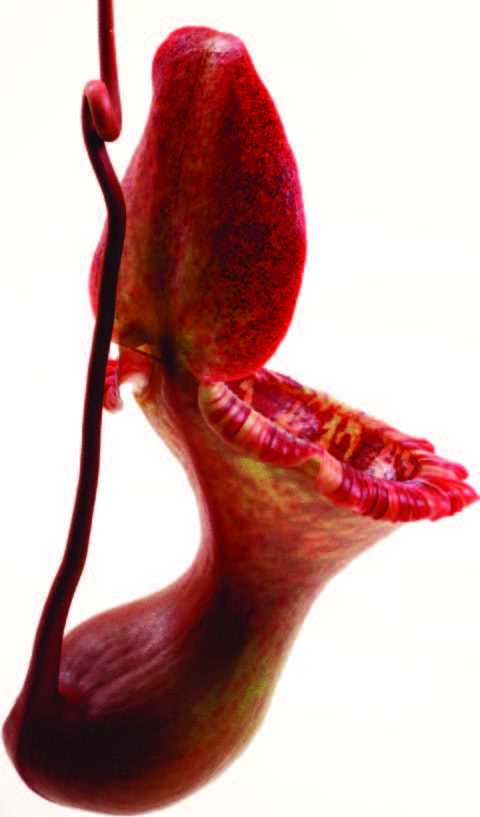
Figure 5: Nepenthes ‘The Succubus’ pitcher.
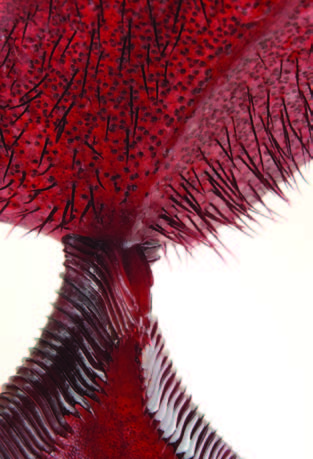 
Figure 6: Nepenthes ‘The Succubus’ lid with numerous hairs (left) and peristome teeth (right).

Figure 7: Nepenthes ‘The Succubus’ plant.
|
